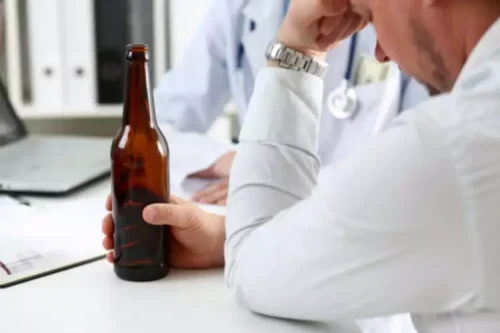
Delirium tremens is a medical emergency that can result in death. If you or someone you know shows signs of delirium tremens, go to the emergency room immediately. By Buddy TBuddy T is a writer and founding member of the Online Al-Anon Outreach Committee with decades of experience writing about alcoholism. Because he is a member of a support group that stresses the importance of anonymity at the public level, he does not use his photograph or his real name on this website. Avoid taking prescription drugs that your doctor hasn’t prescribed to you.
- Your healthcare provider can tell you more about the tests they recommend or used for you (or your loved one) and why.
- Alcohol withdrawal symptoms are the primary reason that many people relapse when they attempt to quit.
- Your healthcare provider can treat these by infusing you (through an IV in your vein) with the necessary vitamins and minerals.
- You’ll have trouble understanding what’s happening to or around you.
From 24 to 72 Hours
Alcohol withdrawal syndrome is a clinical condition that may arise following the cessation or reduction of regular, heavy alcohol consumption. Given its spectrum of manifestations from mild to severe and potentially fatal, all healthcare team members must recognize the signs and symptoms of this condition. Timely assessment and accurate treatment are vital to preventing disease progression. Comprehensive patient care entails acute management and outpatient support in the hospital setting. In the inpatient setting, nurses perform frequent assessments that inform the treatment plan.

What are the complications of delirium tremens?
However, sleep disturbances, irritability, and fatigue may continue for months. In addition, vitamin supplements may be given to replace essential vitamins that are depleted by alcohol use. Once withdrawal is complete, additional medications and supplements may be needed to address complications and nutritional deficiencies that occur because of chronic alcohol use. The first goal of treatment is to keep you comfortable by managing your symptoms. Your doctor’s treatment goal is helping you stop drinking as quickly and safely as possible.
Alcohol use disorder
- It is dangerous to take chlordiazepoxide along with opiate-based medicines, such as methadone, or illegal opiate drugs, such as heroin.
- Symptoms of alcohol withdrawal typically improve within five days, though a small number of patients may have prolonged symptoms, lasting weeks.
- If you begin to experience DT, you always need to get immediate medical attention, as it can be life-threatening.
- One of the main beliefs behind AA is that alcoholic dependence is a long-term, progressive illness and total abstinence is the only solution.
- It produces euphoria and other effects at low blood concentrations.
STT regimen reduces dose and duration of detoxification compared with traditional fixed dose regimen in mild to moderate alcohol withdrawal. However, it is feasible only in relatively stable patients and requires periodic monitoring of the withdrawal severity by trained personnel. For management of severe withdrawals, inpatient care and SML dose is advised. Though rapid loading is advised in DT, the few trials and retrospective chart reviews in DT have used a loading dose regimen. Refractory DT can be managed with phenobarbital or adjuvant antipsychotics. Thiamine supplementation should be routinely prescribed to prevent WE.
History and Physical
There is no exact timeline for alcohol withdrawal, and individual factors, such as the level of dependence on alcohol, will influence it. When that person cuts out alcohol, there is a period when their brain hasn’t yet received the message and still overproduces the stimulating chemicals. With alcohol out of the equation, though, these chemicals cause withdrawal symptoms. These treatments can help ensure that you are able to detox safely and minimize the withdrawal symptoms that you will experience.

Diagnosis and Tests
Still, people experiencing these withdrawal symptoms are generally fully conscious and can think clearly. You may experience AWS between a few hours to a few days after your last drink or suddenly after reducing heavy alcohol use. Take our free, 5-minute alcohol misuse self-assessment below if you think you or someone you love might be struggling with an alcohol use disorder (AUD). The evaluation consists of 11 yes or no questions that are intended to be used as an informational tool to assess the severity and probability of an AUD.
Detox Programs That Help With Alcohol Withdrawal
- Alcohol has a slowing effect (also called a sedating effect or depressant effect) on the brain.
- It’s helpful to think of your craving as a wave; Cravings build, peak, crash and dissipate.
- During an exam, they’ll look for other medical conditions to see if they could be to blame.
- In patients who present with seizures, a thorough neurological and general medical evaluation is a must to detect alternative cause of seizures.
- It teaches you healthy ways to cope with stress and techniques for overcoming the underlying causes of alcohol addiction.
To maintain homeostasis in the CNS, inhibitory signals from the GABAergic system are balanced by excitatory neurotransmitters such as glutamate. Alcohol, a CNS depressant, stimulates the GABAergic system and, in acute intoxication, causes a range of clinical is sneezing a sign of withdrawal manifestations such as disinhibition, euphoria, and sedation. While you may be able to manage mild symptoms on your own or with the support of family and friends based on your doctor’s recommendations, more severe symptoms usually require medical treatment.


